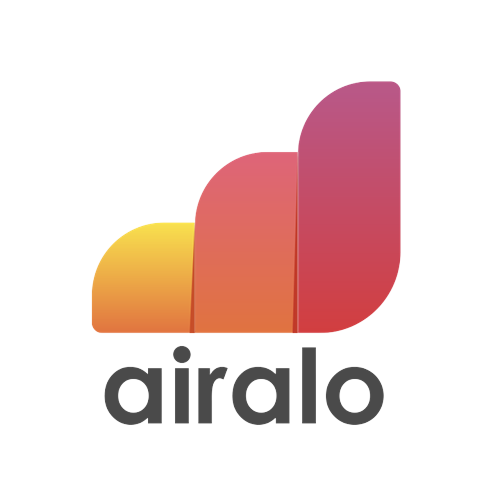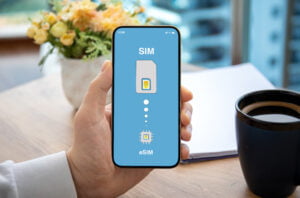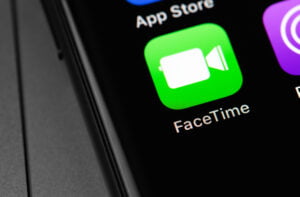Wondering if using a mobile hotspot will cost you money? It’s essential to understand the cost implications before diving into hotspot usage. Whether you’re concerned about data usage or want to know if there are any hidden charges, we’ve got you covered. Stay tuned as we break down the costs and provide insights into making informed decisions.
Understanding Smartphone Mobile Hotspots (SMHS)
A cellphone mobile hotspot (SMHS) is a feature that allows you to share your phone’s internet connection with other devices using a wifi network. This feature is especially useful when you don’t have access to a cellular network and want to connect multiple devices to the internet.
Additionally, some cellphones now support eSIM technology, which allows you to easily switch between different cellular networks without needing a physical SIM card. It acts as a portable Wi-Fi hotspot, enabling you to connect your laptop, tablet, or any other Wi-Fi-enabled device to the internet using your cellphone’s mobile data connection signal.
This feature allows you to have a reliable and convenient wifi network wherever you go.
Definition and functionality of smartphone mobile hotspots
The mobile hotspot feature (SMHS) works by utilizing your cellphone’s cellular data connection signal and broadcasting it as a Wi-Fi network. This allows you to have internet access on other devices even when there is no mobile coverage.
This means that instead of relying on public Wi-Fi networks or using separate data plans for each device, you can simply connect all your devices to your phone’s hotspot and access the internet wherever you go. With the feature of eSIM, you can easily connect multiple devices to your phone’s WiFi hotspot, eliminating the need for public Wi-Fi networks or separate data plans for each device.
How SMHS allows you to share your phone’s internet connection with other devices
When you enable the mobile hotspot feature (SMHS) on your phone, it creates a personal hotspot, a small wireless network that other devices can connect to. This hotspot option allows you to share your phone’s wifi connection with other devices. These devices will then use your phone’s wifi hotspot feature to access the internet using your mobile data connection. It’s like turning your smartphone into a mini-router!
Different types of SMHS available in the market
There are various ways to set up a SMHS and use the hotspot feature on your device to share your wifi connection and access hotspot data.
- Built-in hotspot: Many smartphones come with built-in hotspot functionality, allowing you to easily enable and configure it in the settings.
- Portable hotspot devices: If your phone doesn’t have built-in hotspot capabilities, you can purchase portable hotspot devices that act as standalone routers.
- eSIM technology: Some newer smartphones support eSIM technology, which allows for easy switching between different carriers and enables seamless use of SMHS.
Using an SMHS, or turning on hotspot on Android, does require using some of your mobile data allowance, so it’s important to keep track of how much data you’re using. However, many carriers offer affordable plans specifically for hotspot usage.
By understanding how smartphone mobile hotspots work and the different options available in the market, you can make informed decisions about whether to use an SMHS and how to best utilize this convenient feature.
How Much Does a Hotspot Actually Cost?
Understanding the cost of using a hotspot is crucial before diving into this convenient yet potentially expensive feature. Let’s explore the factors that determine its cost, compare data plans offered by different providers, and discuss tips for managing hotspot costs effectively.
Factors that Determine the Cost of Using a Hotspot
Several factors come into play when determining how much a hotspot will actually cost you:
- Data Plan: The type of data plan you have with your mobile provider plays a significant role in determining the cost. Some plans offer unlimited hotspot usage, while others charge per gigabyte or hour.
- Data Usage: The amount of data you consume while using the hotspot directly affects the cost. Streaming videos, downloading large files, or playing online games can quickly eat up your data allowance and increase your bill.
- Premium Features: Certain premium features, such as high-speed internet or access to specific networks, may come at an additional cost. Be aware of any extra charges associated with these features.
Comparison between Data Plans Offered by Different Providers
Different mobile providers offer various data plans for hotspots, each with its own pricing structure and benefits. Here are some key points to consider when comparing data plans:
- Look at the amount of data included in each plan and how it aligns with your usage needs.
- Check if there are any speed restrictions or limitations on certain activities.
- Compare prices across multiple providers to find the best deal for your budget.
- Consider any additional perks or discounts offered by specific providers.
List of Latest Mobile Hotspot Plans
Here are some of the top mobile hotspot plans available in 2023:
- Verizon:
- Plan: Verizon Get More Unlimited
- Key Features: Unlimited 5G Ultra Wideband & 4G LTE data, 30GB hotspot allowance
- Cost: $90 per month
- AT&T:
- Plan: AT&T Unlimited Elite
- Key Features: Unlimited data with fast speeds, 40GB hotspot allowance
- Cost: $85 per month
- T-Mobile:
- Plan: T-Mobile Magenta MAX
- Key Features: Unlimited premium data with no throttling, 40GB high-speed hotspot usage
- Cost: $85 per month
- Sprint (now part of T-Mobile):
- Plan: Sprint Unlimited Premium
- Key Features: Unlimited data with HD streaming, 100GB LTE mobile hotspot usage
- Cost: $80 per month
Different Activities Consume Varying Amounts of Data
When using your mobile hotspot, it’s important to understand how much data different activities consume. Here’s a breakdown of approximate data usage for common tasks:
- Web browsing: On average, web browsing consumes around 60 MB per hour. This includes loading web pages, scrolling through social media feeds, and checking emails.
- Streaming music: Streaming music on platforms like Spotify or Apple Music typically uses around 144 MB per hour at the highest audio quality. However, the exact amount of data used will vary depending on the audio quality setting you choose. For example, streaming music at the lowest audio quality setting will use around 10 MB per hour.
- Video streaming: Video streaming on popular platforms like Netflix or YouTube consumes around 3 gigabytes (GB) per hour for HD video. The exact amount can vary depending on factors such as video quality (SD vs HD), the length of the video, and the device you’re using. Low: 300 MB per hour, Standard: 1 GB per hour, High: 3 GB per hour, Ultra high definition (4K): 7 GB per hour.
- Video calls: Whether you’re using Zoom, Skype, or another video conferencing platform, video calls tend to use a moderate amount of data. On average, a one-hour video call on average consumes approximately 540 MB to 1.62 GB, depending on the video quality settings and the number of participants. However, this can vary based on factors like the number of participants and the quality settings.
Tips for Managing Hotspot Costs Effectively
To keep your hotspot costs under control, consider implementing these tips:
- Monitor Your Data Usage: Keep track of how much data you’re consuming regularly to avoid exceeding your plan’s limits and incurring extra charges.
- Connect to Wi-Fi Whenever Possible: Utilize Wi-Fi networks whenever available to conserve your hotspot data for times when you don’t have access to Wi-Fi.
- Optimize Data Usage: Use data-saving features on your devices and apps, such as limiting background data usage or streaming at lower quality.
- Consider Shared Plans: If you have multiple devices that require hotspot access, explore shared plans that allow you to distribute the data allowance among all devices.
By understanding the factors that determine hotspot costs, comparing data plans from different providers, and implementing effective cost management strategies, you can make the most of this convenient feature without breaking the bank.
Step-by-Step Guide: Using a Hotspot on Android
Setting up a hotspot on an Android device
To use your Android device as a hotspot, follow these steps:
- Open the settings on your Android device.
- Look for the “Network & Internet” or “Connections” option and tap on it.
- Find and select the “Hotspot & Tethering” option.
- Tap on “Wi-Fi hotspot” or “Mobile hotspot” to enable it.
Configuring security settings for your hotspot connection
Once you’ve enabled the hotspot, it’s important to configure the security settings to protect your connection:
- In the hotspot settings, look for the option to set a password for your hotspot network.
- Create a strong password that is difficult for others to guess.
- Consider changing the network name (SSID) if you want to personalize it.
Troubleshooting common issues when using an Android hotspot
Sometimes, you may encounter issues when using an Android hotspot. Here are some troubleshooting tips:
- If other devices cannot connect to your hotspot, try restarting both your Android device and the connecting device.
- Ensure that you have sufficient mobile data or internet connectivity on your Android device.
- Check if there are any software updates available for your Android device and install them if necessary.
Remember, using a mobile hotspot can consume data from your cellular plan, so keep an eye on your usage to avoid exceeding any limits or incurring additional charges.
Debunking the Myth: Do Hotspots Incur Extra Charges?
Using a hotspot can be a convenient way to stay connected when you’re on the go. But there’s a common misconception that using a hotspot will lead to additional charges from your provider. Let’s clear up this myth and understand the real deal behind hotspot costs.
Clarifying whether using a hotspot leads to additional charges from your provider
Contrary to popular belief, most mobile providers do not charge extra for using a hotspot. The data you consume while connected to a hotspot is simply deducted from your existing data plan. So, if you have 5GB of data per month and you use 1GB while connected to a hotspot, you’ll have 4GB remaining for other usage.
Understanding any limitations or restrictions imposed by providers on hotspot usage
While hotspots themselves may not incur extra charges, it’s important to note that some providers may impose limitations or restrictions on hotspot usage. These limitations could include:
- Data throttling: After reaching a certain threshold of data usage, your provider might slow down your connection speed.
- Data caps: Your provider may set limits on how much data you can use via the hotspot feature.
- Device compatibility: Not all devices may support the use of hotspots, so it’s essential to check if your device is compatible.
It’s crucial to review your provider’s terms and conditions regarding hotspot usage to ensure you’re aware of any potential restrictions or limitations.
Dispelling misconceptions surrounding extra charges related to hotspots
The idea that using a hotspot automatically incurs additional charges is simply not true for most mobile plans. As long as you stay within your allocated data limit, there should be no extra fees specifically tied to using a hotspot.
Remember that different providers may have varying policies and terms regarding hotspots, so it’s always wise to double-check with your specific provider about any potential costs or restrictions.
Using a hotspot can be a cost-effective way to access the internet on your devices, especially when you’re away from Wi-Fi networks. By understanding how hotspots work and clarifying any misconceptions about extra charges, you can make informed decisions about using this convenient feature without breaking the bank.
Choosing the Right Phone Plan for Hotspots
It’s important to choose a phone plan that suits your needs. Let’s explore some factors to consider when selecting a phone plan with a suitable hotspot option.
Factors to Consider
- Features and Pricing: Compare different phone plans based on their features and pricing. Look for plans that offer a dedicated mobile hotspot feature or allow tethering. Consider the cost of adding a hotspot option to your existing plan versus choosing a plan that includes it.
- Unlimited Data Plans: Evaluate unlimited data plans and their suitability for frequent hotspot users. Some plans may throttle or slow down your hotspot speeds after reaching a certain data limit, while others may offer truly unlimited high-speed hotspot usage.
- Mobile Coverage: Check the coverage of different carriers in your area and learn how to turn on hotspot on Android. Ensure that the carrier you choose has reliable coverage and offers good internet speeds for hotspot usage.
- Data Allowance: Consider the amount of data included in each plan, especially if you intend to use the hotspot frequently or for activities that consume large amounts of data like streaming videos or downloading files.
- Contract vs Prepaid: Decide whether you prefer a contract-based plan or a prepaid option. Contract-based plans often come with more extensive features but may require long-term commitments, while prepaid options provide flexibility without binding contracts.
Exploring Mobile Hotspot FAQs and Provider Support
Answering frequently asked questions about mobile hotspots
So, you’ve got yourself a mobile hotspot and you’re ready to connect all your devices on the go. But wait, does using a hotspot cost money? Let’s dive into some frequently asked questions about mobile hotspots to clear things up.
- Does using a mobile hotspot cost money? Well, it depends on your service provider and the plan you have. Some carriers offer hotspot data as part of their plans, while others may charge an additional fee for hotspot usage. It’s best to check with your provider to understand any associated costs.
- How do I set up my mobile hotspot? Setting up a mobile hotspot is usually straightforward. You can access the device support page or guide provided by your carrier for step-by-step instructions tailored to your specific device.
- Can I use my mobile hotspot in all areas? The availability of mobile hotspot coverage depends on the network coverage in your area. Different carriers have varying coverage maps, so it’s essential to check if your desired locations are within their network range.
Seeking assistance from service providers regarding any technical issues with hotspots
Sometimes, technical issues can arise with your mobile hotspot. Don’t worry; help is available! Here are some ways you can seek assistance:
- Contact customer support: Reach out to your service provider’s customer support team via phone, email, or live chat for troubleshooting assistance.
- Visit support forums: Many carriers have online community forums where users share their experiences and provide solutions for common issues related to hotspots.
- Utilize official apps: Some providers offer dedicated apps that allow you to manage and troubleshoot any problems with your hotspot directly from your smartphone.
Understanding customer support options provided by various network carriers
Different network carriers offer varying levels of customer support for their customers’ convenience:
- 24/7 helpline: Some carriers provide round-the-clock customer support, ensuring assistance is available whenever you need it.
- Online chat support: Live chat options are often available on carrier websites or mobile apps, allowing you to connect with a support representative in real-time.
- Self-help resources: Many carriers offer comprehensive online guides, FAQs, and troubleshooting articles on their websites to help customers resolve common hotspot issues independently.
Remember, each carrier has its own unique offerings and support channels. It’s essential to explore the specific customer support options provided by your network carrier for the best assistance experience.
Understanding the True Cost of Hotspots
Now that you have a better understanding of smartphone mobile hotspots and how they work, let’s dive into the true cost of using them. Many people wonder, “Does hotspot cost money?” The answer is both yes and no. While some carriers may charge an additional fee for hotspot usage, others include it as part of your regular data plan. It all depends on your specific carrier and phone plan. To avoid any surprises on your bill, it’s important to carefully review your plan details or reach out to your provider for clarification.
In today’s digital age, staying connected on the go has become a necessity rather than a luxury. Whether you’re a remote worker, a frequent traveler, or simply someone who values having internet access wherever you are, a mobile hotspot can be a game-changer. So if you find yourself constantly needing internet access outside of Wi-Fi zones, consider exploring phone plans that offer hotspot capabilities without incurring extra charges. By choosing the right plan for your needs and understanding the costs involved, you can enjoy seamless connectivity without breaking the bank.
FAQs about Hotspot Costs
Can I use my hotspot without paying extra?
Yes, depending on your carrier and phone plan. Some plans include mobile hotspot usage at no additional cost.
How do I know if my plan includes hotspot?
You can check with your carrier by contacting their customer support or reviewing the details of your phone plan online.
What happens if I exceed my data limit while using a hotspot?
If you exceed your data limit while using a hotspot, it may result in additional charges or reduced speeds depending on your carrier’s policy.
Are there any unlimited data plans that include hotspot usage?
Yes, some carriers offer unlimited data plans that also include unlimited mobile hotspot usage. However, it’s important to review the terms and conditions to ensure there are no hidden limitations or restrictions.
Can I share my hotspot with multiple devices?
Yes, most smartphones allow you to connect multiple devices to your hotspot, making it convenient for sharing internet access with friends or family members.
How much data does using a hotspot consume?
The amount of data consumed while using a hotspot depends on various factors such as the activities you engage in online, the number of devices connected, and the duration of usage. Streaming videos or downloading large files will consume more data compared to simple web browsing or email checking.
Remember to always review your phone plan details and contact your carrier if you have any specific questions about hotspot costs or limitations.





